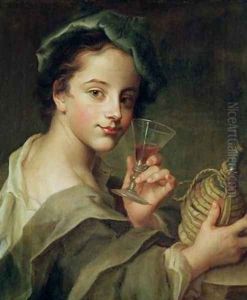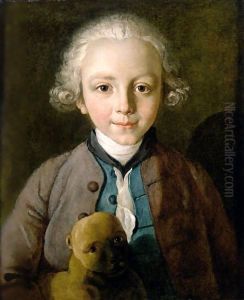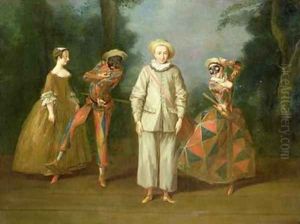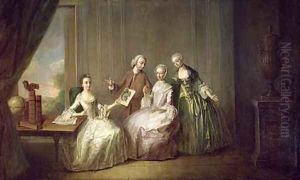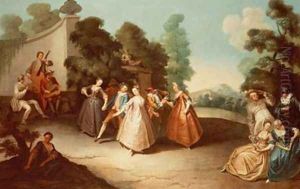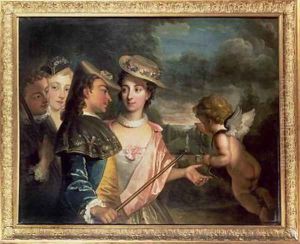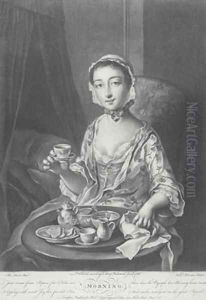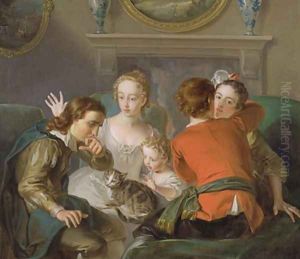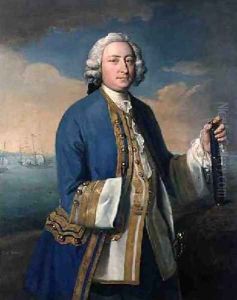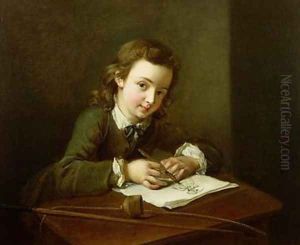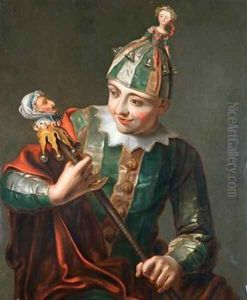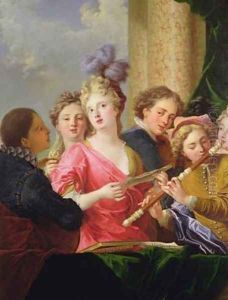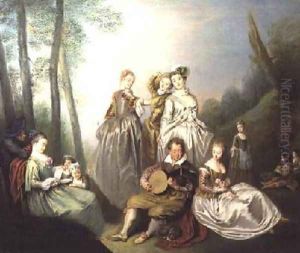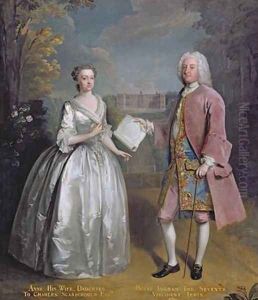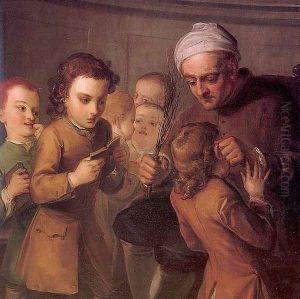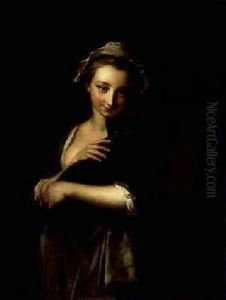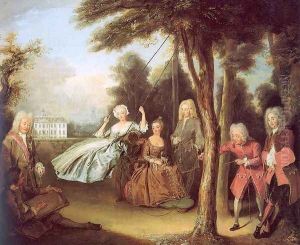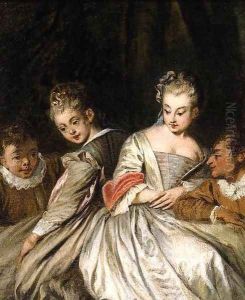Philipe Mercier Paintings
Philippe Mercier, also known as Philip Mercier, was a French painter and etcher, born in Berlin in 1689. He studied painting in Berlin and later moved to London in 1716. Mercier's early works in England were influenced by French Rococo themes, and he is often credited with introducing the Rococo to English decorative painting.
In 1720, Mercier was appointed as the Principal Painter in Ordinary to Frederick, Prince of Wales, which significantly boosted his career. During this period, he created portraits of the royal family and several notable public figures. His style incorporated a mixture of informality and intimacy, which was relatively new to English portraiture at the time.
Mercier's tenure with the royal family, however, was short-lived; he lost the position in 1736. After leaving court, he moved to York and continued to work as a portrait painter. It was during this time that Mercier developed a more English style, painting conversation pieces—informal group portraits that became popular in mid-18th-century Britain.
Throughout his career, Mercier also created theatrical and fancy pictures, which were genre scenes with figures in costume. These works exhibited a lighter, more playful quality and often depicted scenes from contemporary theatre or pastoral poetry.
Mercier's later years saw a decline in his fortune and popularity. He struggled to maintain his relevance in the rapidly changing art market of the time. Philippe Mercier died in London in 1760, leaving behind a body of work that had a lasting influence on the development of English painting, particularly in the realms of portraiture and genre painting.
